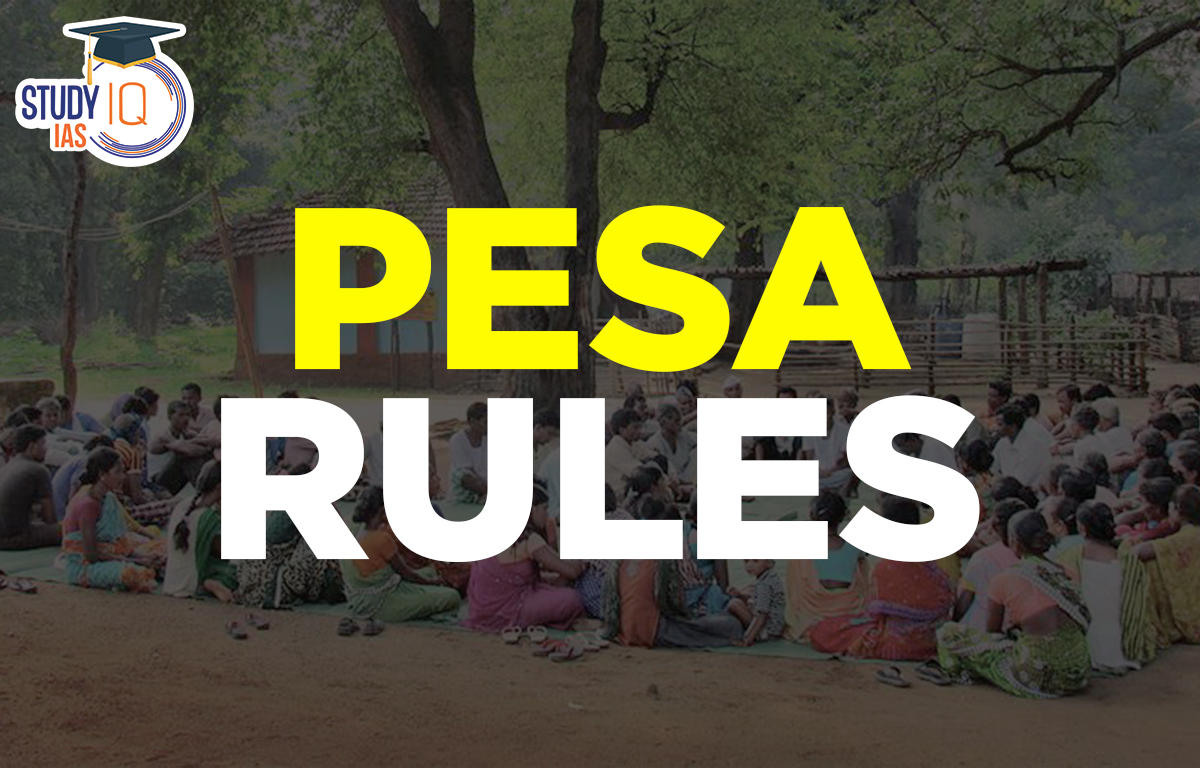Table of Contents
PESA Rules Background Information
- Article 243M(4)(b) of the Constitution empowered Parliament to enact “the Provisions of the Panchayats (Extension to the Scheduled Areas) Act, 1996” (PESA) to extend Part IX of the Constitution, relating to Panchayats, to the Fifth Schedule areas, with certain modifications and exceptions.
- States with Fifth Schedule Areas have been empowered to make Panchayat Laws for these areas.
- About PESA Act:
- PESA is an Act to provide for the extension of the provisions of Part IX of the Constitution relating to the Panchayats to the Scheduled Areas.
- State Legislatures have been empowered to frame all laws concerning the extension of the provisions of Part IX of the Constitution relating to the Panchayats in Fifth Scheduled Areas.
- In terms of section 2 of this Act, “Scheduled Areas” means the Scheduled Areas as referred to in clause (1) of Article 244 of the Constitution.
- Out of the 10 PESA States, eight States namely; Andhra Pradesh, Chhattisgarh, Gujarat, Himachal Pradesh, Maharashtra, Madhya Pradesh, Rajasthan and Telangana have framed and notified their State PESA Rules under their respective State Panchayati Raj Acts.
Highlights of Madhya Pradesh PESA Rules
- It will empower the Gram Sabhas to take decision on the rules and regulations with regard to all natural resources in the forest areas.
- PESA gives special power to gram sabhas in scheduled areas, especially for the management of natural resources.
- It will give more constitutional rights to the tribal people to reap the benefits of natural resources from the forest areas where they live.
- It will ensure that conversions and marriages done by “alluring” tribal women to get land notified as tribal land is stopped.
- It will allow self-governance through Gram Sabhas in 89 tribal blocks of the state, covering 2,350 villages in 5,212 panchayats.
- PESA allows gram panchayats to decide matters related to minor forest produce, land and small water bodies along with implementation of government schemes and maintaining records of migrant labourers for curbing bonded labour in these scheduled areas.
PESA Rules in Scheduled Areas
- Article 244 (1) of the Indian Constitution defines Scheduled Areas as the areas defined so by the President of India and are mentioned in the fifth schedule of the Constitution.
About Scheduled Areas:
- Part 10 of the Indian Constitution entails the provisions related to Scheduled and Tribal Areas with Articles 244 – 244 A.
- President is empowered to declare an area as Scheduled Area
- With the consultation of the governor of the state, the President can alter, add, diminish the boundary of a Scheduled Area
- Both the Centre and the State have their roles to play in the administration of the Scheduled areas.
- While the governor of the state has to report annually to the President over the management of such area, the Centre gives directions to the state regarding the administration of such areas.
- Criteria for the declaration of the Scheduled Area:
- Prominent numbers of tribal population, i.e. when tribal people are in majority in an area
- Compactness and reasonable size of the area
- A viable administrative entity such as a district, block or taluk, and
- Economic backwardness of the area as compared to the neighbouring areas.
Read More Current Affairs :
- Read about: PESA Act
- Read about: Data Protection Bill
- Read about: Narco Test





















 WhatsApp
WhatsApp